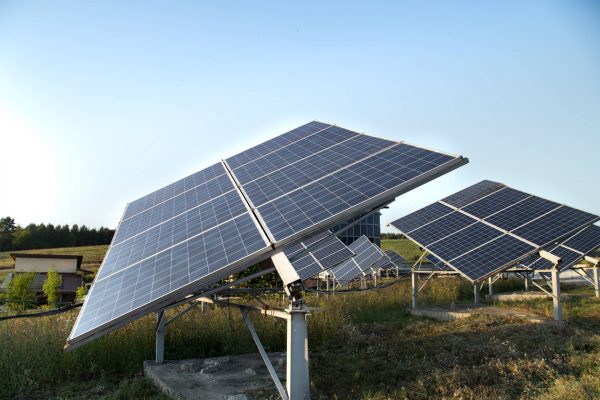Project Report For Solar Panel
Introduction
The project report for Solar Panel is as follows.
Solar energy is generated by the sun. A solar panel (sometimes called a “PV panel”) is a type of electrical appliance that uses the photovoltaic effect to directly convert solar energy into electricity.
In addition to producing electricity for household and commercial solar electric systems, solar panels can also be used for a wide range of other purposes, such as remote power systems for cabins, telecommunications equipment, remote sensing, and many others.

Benefits Of Solar Panel
It is highly practical to generate electricity for many uses by using solar panels. Off-grid living would have to be the logical choice. Off-grid living entails residing somewhere that is not connected to the main electric utility grid. Solar power systems are a great asset for cabins and homes in remote areas. Electric utility pole and cable installation from the closest main grid access point no longer requires exorbitant costs. If properly maintained, a solar electric system can potentially be less expensive and provide power for up to three decades.
The biggest advantage of using solar electricity, besides the fact that it enables off-grid living, is that it is a clean and renewable energy source. With the onset of global climate change, it is more crucial than ever that we take action to lessen the pressure that greenhouse gas emissions are placing on our environment. Solar panels require minimum maintenance because they have no moving parts. They are toughly constructed and, with regular maintenance, last for decades.
Working Of Solar Panel
In order to utilise the special qualities of solar cells and produce power, they are mounted on solar panels. Individual cells experience the photovoltaic effect when they take in photons from the Sun, which causes the cell to produce an electric current. An inverter transforms the direct current produced by a solar panel into alternating current. A photovoltaic system is created by combining these two technologies. The ideal orientation for a solar panel installation is chosen such that the solar panel faces the application’s most suitable direction. Though it’s not always the case, this is typically done to produce the most energy per year.
Market Portential Of Solar Panel
The market for solar energy systems was assessed at USD 160.3 billion in 2021, and from 2022 to 2030, it is anticipated to increase at a CAGR of 15.7%. Over the projected period, the industry is anticipated to increase as a result of the rising demand for sources of sustainable energy generation to replace conventional energy sources. Solar energy is now more competitive in the energy generation sector thanks to solar energy system cost reductions. Due to significant investments in solar energy technology, component costs are anticipated to continue to decline in the years to come. As a result, solar energy systems are anticipated to become more affordable than already operational coal or gas power plants.
The global industry has been further segmented based on products into solar panels, charge controllers, batteries, inverters, and other items. In 2021, the solar panel market dominated the entire world and accounted for more than 41.45% of total revenue. The most important component of a solar energy system is the solar panel, which transforms solar energy into electrical energy. Depending on the installation’s needs, multiple solar panel types—including crystalline silicon and thin film—are used. To boost the effectiveness and lifespan of the panel, significant investments have been made in new solar panel technology.
Project Report Sample For Solar Panel
Need Help?
Create 100% Bankable Project Report
